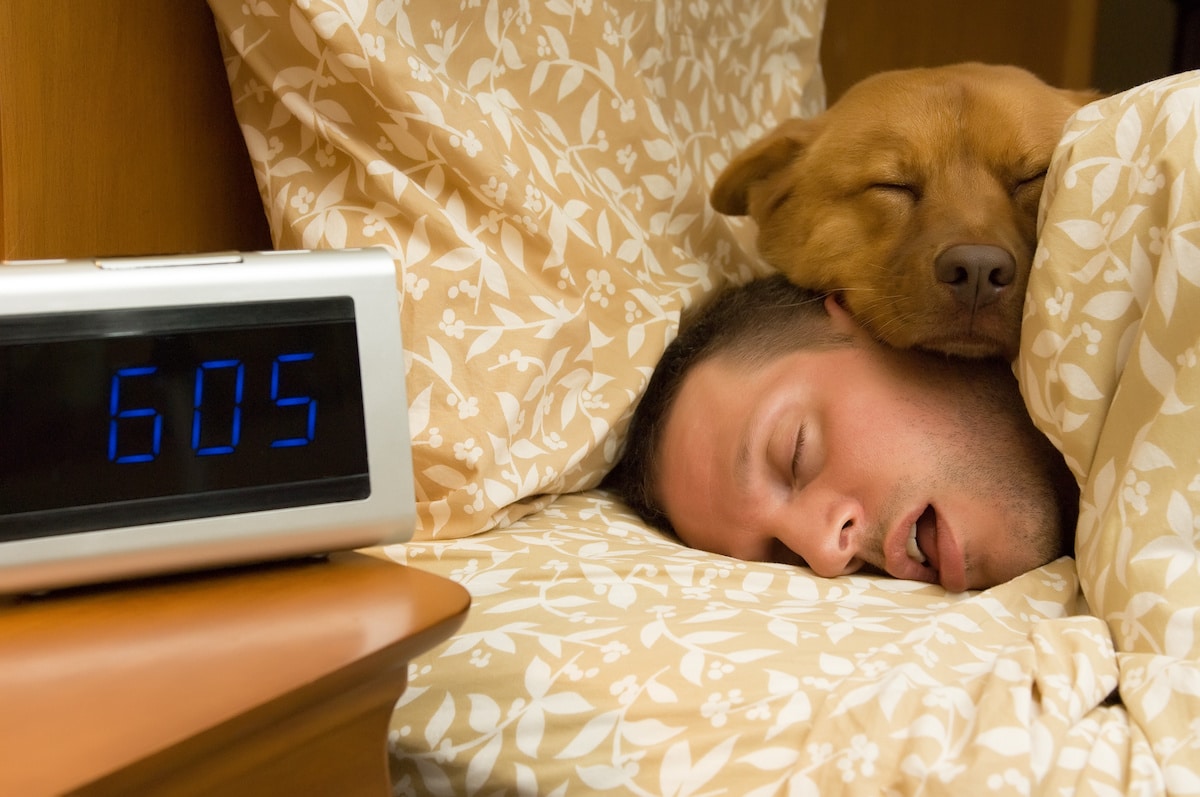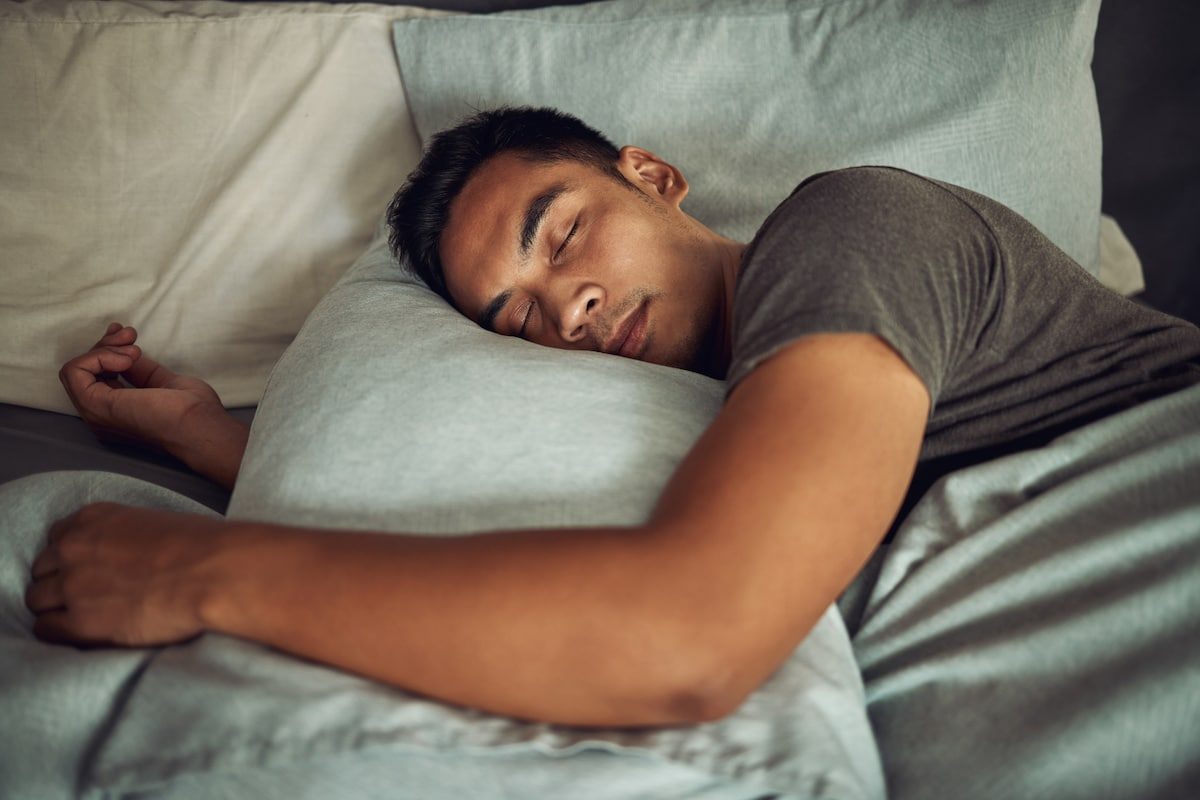Do you have trouble sleeping? Nothing is worse than feeling ready for sleep, yet the minute your head hits the pillow, you’re wide awake. You need enough sleep to remain sharp and think clearly, while also helping to keep your body healthy. When you lack sleep, you know all too well everything feels sluggish, and you’re just not functioning at full capacity. This is because you’re not getting enough REM sleep.

Although there can be several factors keeping you up at night, it helps to have a few tips under your belt to enjoy a better night’s sleep. Whether you find yourself wide awake at bedtime or you tend to toss and turn, knowing how to get more REM sleep will help. Here we offer tips on how to sleep better in 2023 by increasing your REM Sleep and don’t forget to check out our collection of Merchandise Rewards in our Wellness Zone.
Track REM Sleep
Rapid eye movement or REM sleep is the stage of sleep where we dream. It tends to happen within 90 minutes of falling asleep. REM is when your brain gets to work storing memories from the day. During REM sleep, your brain activity is similar to your waking hours as it processes emotions and memories while experiencing vivid dreams. To feel fully rested, you should get two hours of REM sleep each night.
Without getting too scientific on you, without enough REM sleep, you’ll start to experience sleep deprivation, which makes it difficult to concentrate. You’ll feel like a zombie much of the day and find you are more forgetful. Get enough REM sleep, and you’ll wake ready to face the day feeling more yourself. A Fitbit device is the perfect tool to track your sleep stages as well as the time you are awake, asleep, or restless.
Have a Sleep Schedule
Although this is asking the impossible for a lot of people, having a regular sleep schedule helps set the stage for better sleep. This doesn’t just apply to night owls but also to people who love to sleep in or are chronic early risers. The thing is, while sleep needs vary for every person, on average you need at least seven hours of sleep each day.
Ideally, you should go to bed at the same time every night and get up at the same time every morning to help create a sleep-wake cycle your body can stick to. This also includes weekends, when a lot of us tend to stay up later and sleep in longer. You can use a Fitbit device to set your sleep schedule. You can track your average sleep duration and quality to help choose the best sleep schedule for you. You can also review your sleep patterns to help explain that sluggish feeling.
Set Sleep Goals
Your schedule becomes more effective when you set sleep goals. You can decide the number of hours that seem to work best for your needs, aiming for at least seven hours and ensuring your alarm is set no later than nine hours. Fitbit sets your target times which can be adjusted when you track your sleep patterns and compare them to how rested you feel.
Don’t Toss and Turn
Once you’re in bed, if you find yourself tossing and turning, it feels like the best way to fall asleep is to stay there. However, if it takes longer to fall asleep than 20 minutes, your body is telling you it’s not ready for sleep yet. To avoid frustration, get up and find something to help relax you. Avoid more screen time on your phone, TV, or computer, as they produce blue light that disrupts sleep. Instead, read or listen to calming music. Once you feel yourself drifting off, head back to bed. Also, try not to let this change your sleep schedule.
Watch When and What You Eat and Drink
We probably don’t have to tell you that caffeine keeps you up at night. However, it’s not just caffeine that impacts sleep. When and what you eat also determines how well you sleep. Although going to bed hungry can interfere with sleep, you also should avoid heavy, large meals a few hours before bedtime. When you eat your dinner affects your sleep-wake schedule. You should be eating your dinner at least two to three hours before bed. The later you eat and the heavier the meal, the more likely it will keep you from sleeping. Other things that act as stimulants before bed include alcohol and nicotine. Although you might find a drink makes you feel sleepy, it tends to wake you in the middle of the night.
Create a Sleep Sanctuary and Wind Down Process
Your bedroom should be a sanctuary that makes you feel peaceful and relaxed (and we have plenty of Merchandise Rewards that can help you with that). A cool, dark room that is quiet creates the ideal sleep environment. You should also use a wind-down process to prepare your mind and body for sleep. Your Fitbit can tell you when it’s time to wind down and also provides a relaxing app to help lull you into a restful state. You can also use these restful techniques to wind down:
- Avoid screen time just before bedtime
- Use room-darkening shades on your windows
- Keep things quiet with earplugs
- Consider using white noise, such as a fan or app
- Take a hot bath or shower before bed
- Meditate to relieve stress
No Daytime Naps
The problem with not getting enough REM sleep is that it can create a vicious circle where you are sleepy during the day and take naps, then aren’t able to fall or stay asleep at night as you’re too rested. We’re sure anyone navigating a little one’s nap schedule can relate! To avoid this cycle, force yourself to stay awake during the day. Although that daytime nap is tempting, it contributes to your restless nights. If you feel yourself drifting off, get up and do something.

Get Moving
Exercise and activity during the day can help you sleep better at night. While you should avoid exercise right before bed, exercise such as a walk during your lunch hour or other physical activities, especially outside, helps you enjoy deeper sleep. Just 30 minutes of light aerobic exercise will help you sleep through the night. A Fitbit provides reminders, such as walking at least 250 steps a day or getting up and moving for a few minutes every hour.
Manage Your Stress
Of course, stress plays a major role in your quality of sleep. Tossing and turning are often generated by a mind that just won’t calm down. Managing stress is key to getting a good night’s sleep. Some stress management tips include:
- Mindfulness meditation: Learning to process your thoughts and feelings without judgment helps you encounter stressful thoughts, accept them, and move on. It teaches you to be present in the moment, which in this case is sleep, so you can remove all other thoughts to help reduce sleep disturbances
- Body scan meditation: This technique is a simple way to relax by focusing on the different parts of your body from head to toe and slowly relaxing each part to help prepare for sleep
- Guided meditation: Using visualization to help create a more calming environment can be easier with a guide such as music, nature sounds, or even a soothing voice such as an audio book or story. A wireless speaker like the Cleer® Crescent Smart Audio Speaker is ideal for guided meditation
- Deep breathing: Deep breathing is also a meditation and relaxation technique that is perfect at bedtime and if you wake up in the night. There are several techniques you can try, but they all focus on the rise and fall of your stomach as you inhale and exhale slowly. Sleep tools like Dodow can help with deep breathing
- Meditative movement: These are special exercises such as yoga and tai chi. They focus your attention much like mindfulness to release stress and create a sense of calm
- Progressive relaxation: Much like the body scan method, with progressive relaxation, you focus on body parts. In this case, you tense and relax muscles from your feet up to your head to relieve tension
Meditation can be done before bed, but also when you find yourself tossing and turning or suddenly wide awake. Fitbit Sense 2 offers meditative apps to help with stress management and relaxation techniques.
Replace Your Pillows
It could be your pillows are making you uncomfortable while you sleep. Choosing the right pillow depends on your preferred sleep position. For example, while there are some sleep benefits to sleeping without a pillow if you sleep on your stomach, for most people sleeping with the right pillow is much better for your health. Stomach sleepers will find a thinner pillow works best, while back sleepers will find a pillow designed with a thin front and a taller back is more comfortable. Side sleepers need more depth to offer support between the neck and shoulders.
Knowing how to increase REM sleep doesn’t need to be expensive. In fact, most of these tips are things you can start doing right now without any trip to the store. If you want to purchase a product or a gadget to aid sleep, AIR MILES is here to reward you for that. Collectors can also redeem Dream Miles™ for wellness products.
Join today to make your literal and figurative dreams come true.






